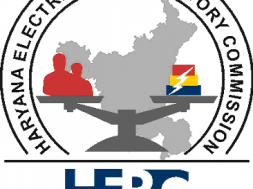
The Electricity (Amendment) Bill promises to unlock the next round of reforms the sector needs
It is no secret that a healthy and efficient power sector can catalyse India’s post pandemic economic recovery. Universal access to affordable, clean and modern energy is key to the wellbeing of a growing population besides enhancing industrial competitiveness. In this context, the recent amendments proposed by the government to the Electricity Act 2003 can be a game changer, by unleashing the next generation of legislative and regulatory reforms, in tune with the radical transformation the sector has undergone.
The power sector today is seeing increased private participation, a thrust on renewables and other structural changes across the value chain, that call for a fresh set of ground rules addressing current pain points. The Electricity Amendments Bill 2021 aims to reinvigorate the sector while focusing on the 4 Cs—customer, competition, compliance and climate. The changes can potentially make the sector more viable, transparent and investor-friendly, besides helping achieve India’s ambitious clean energy targets. It is thus critical that after two previous unsuccessful attempts, these amendments see the light of day.
At present, distribution is the sector’s Achilles heel, with most discoms in abject financial and operational health. In 2021, India recorded AT&C losses of 24.54%, more than double the global average. Cash strapped discoms have failed to meet their payment obligations to generators with dues of nearly Rs 70,000 crore (March 2021), creating stress across the value chain. Being perennially in the red has also prevented modernization of their infrastructure and investment in technology such as smart meters.
The new Bill looks to tackle legacy issues responsible for this by proposing that retail tariffs be “cost-reflective”, i.e., should no longer incorporate subsidies, which states would pass onto customers via Direct Benefit Transfer (DBT). This is a welcome rationalization that should ease the liquidity crunch discoms face, improve the quality of power supply and boost overall profitability of the sector.
The government has also proposed a progressive reduction in cross-subsidy surcharges which should reduce the cost of commercial power, thereby enhancing the competitiveness of domestic industries as we look to build an Atmanirbhar Bharat. These reforms will also provide financial relief to the states burdened by discom resource crunch, while helping attract more investments due to reduced industrial tariff. DBT should ensure targeted subsidy, further easing the burden on states.
A stand-out feature is the proposal to “delicense” distribution, by adopting a sub-licencee or franchisee model. This will facilitate private firms in entering and competing with discoms. While consumers benefit through lower tariffs and improved service, this will also attract fresh capital, novel practices and the latest technology, boosting efficiency and reducing losses.
Another key area of focus is compliance as the Bill seeks to strengthen and streamline various regulatory bodies, for better governance and faster dispute resolution. The proposal to establish an Electricity Contract Enforcement Authority (ECEA) with powers of a civil court will inspire confidence amongst investors who have often been at the receiving end of discoms unilaterally reneging on PPAs or renegotiating tariffs.
The Bill also recommends an expansion of the Appellate Tribunal (APTEL) for speedier disposal of cases, inclusion of a member with experience in law in SERCs for stricter enforcement, a common Selection Committee and uniform criteria for appointing members of APTEL, CERC, ECEA and SERCs in a transparent manner and a legal sanction for the NLDC to monitor overall grid operations and security. All of these are well conceived and timely changes that should instill greater discipline and remove bottlenecks.
Perhaps the most dramatic transformation the sector has seen is the rising adoption of renewable energy, with India focused on reducing its carbon footprint, in line with Paris Agreement commitments. Backed by a favorable policy framework, renewables capacity has surged in the last few years, crossing the 100 GW milestone recently. This transition to clean energy is set to continue as India eyes 450 GW by 2030 with concomitant growth in battery storage, clean mobility, energy efficiency and Green Hydrogen. The sector needs to be ready and provide an enabling ecosystem to accelerate this change.
This is exactly what the proposed National Renewable Energy Policy is expected to do—by setting emission reduction targets, creating a conducive investment climate, fostering R&D and establishing required market mechanisms. Another important reform is the planned shifting of the responsibility of fixing RPOs & HPOs from states to the Centre, given our national climate goals. This, coupled with stringent penalties for non-compliance, will greatly incentivize RE generators.
The proposed amendments should galvanize the power sector as we pursue a “greener” grid and affordable power for all. However, on ground implementation will be key and this will be possible only when the Centre actively engages with the states and takes them along in the true spirit of cooperative federalism. I do hope that the states will align themselves to the broader vision and extend their full cooperation, in the interest of a sustainable, efficient and future ready power sector.

















